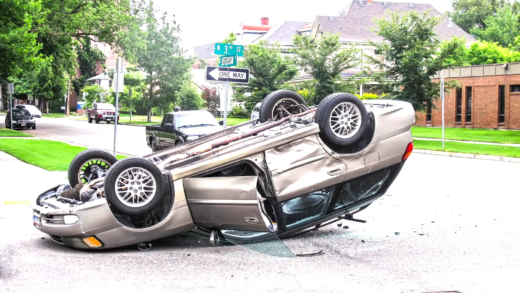Daylight Saving Time affects sleep patterns and increases accident rates. Not all regions observe it, leading to potential confusion. Other factors like weather and traffic volume also contribute to risks. To stay safe, adjust sleep schedules and remain vigilant while driving.
What is Daylight Saving Time?
Daylight Saving Time (DST) is a practice that involves setting the clock forward by one hour during the warmer months, typically in spring, and setting it back again in the fall. The primary goal of DST is to make better use of daylight during the longer days of summer. By shifting the hour of daylight, it is believed that energy consumption can be reduced, as people can enjoy more sunlight in the evening.
Many regions around the world observe DST, although some places do not participate. The concept was first proposed by Benjamin Franklin in 1784 and has been adopted by various countries since then. The impact of Daylight Saving Time on sleep and daily routines has been a topic of debate, particularly concerning its effects on health and safety.
How Does Daylight Saving Time Affect Sleep?
Daylight Saving Time can significantly disrupt sleep patterns. The clock change can lead to a temporary mismatch between our internal body clocks and the external environment. When we spring forward, many people lose an hour of sleep, which can result in sleep deprivation. This disruption can take days or even weeks to adjust to, depending on the individual.
Research indicates that sleep quality may decline during the transition into and out of DST. Factors such as increased stress, anxiety, and changes in daily routines contribute to these sleep disturbances. A study from the American Academy of Sleep Medicine noted that the incidence of sleep disorders can rise during these transitions.
Sleep Deprivation and Driving Performance
Sleep deprivation has a direct correlation with driving performance. Lack of sleep impairs cognitive functions, reaction times, and decision-making abilities. When individuals are sleep-deprived, they are more likely to experience lapses in attention, similar to the effects of alcohol consumption. The National Highway Traffic Safety Administration (NHTSA) reports that drowsy driving is a significant contributor to road accidents.
During the weeks following the change to Daylight Saving Time, studies have shown an increase in traffic accidents. For example, a study published in the Journal of Sleep Research found that the risk of accidents increased by 17% in the days immediately following the clock change. This statistic highlights the importance of being aware of how sleep deprivation affects our driving abilities, especially during DST transitions.
Are Accidents More Likely During Time Changes?
Daylight Saving Time (DST) significantly impacts accident rates. Studies show that during the spring transition, when clocks move forward, the risk of accidents increases. According to the National Highway Traffic Safety Administration, traffic accidents rise by about 17% in the week following the time change. This spike is primarily attributed to sleep deprivation caused by the lost hour. Drivers experience reduced attention and slower reaction times, similar to being under the influence of alcohol.
Statistics reveal that the first Monday after the spring change is particularly dangerous. In fact, a study published in the Journal of Sleep Research indicates that there’s a noticeable increase in fatal accidents during this period. The adjustment period can take several days, leading to a higher likelihood of collisions and other traffic incidents.
Types of Accidents Linked to Time Changes
Several types of accidents see a spike during the daylight saving transitions. These include:
- Rear-end collisions: Drivers may not react quickly enough, causing crashes at stoplights or when merging.
- Pedestrian accidents: With impaired attention, drivers often miss seeing pedestrians, leading to accidents.
- Single-vehicle crashes: Drivers may drift off the road due to drowsiness, resulting in crashes into barriers or trees.
- Multi-vehicle accidents: Increased traffic congestion during the adjustment period can lead to chain-reaction crashes.
These types of incidents underline the importance of being cautious during the DST transitions. Awareness of the increased risk can help drivers take necessary precautions.
How to Stay Safe While Driving During Time Changes
Staying safe while driving during Daylight Saving Time transitions requires proactive measures. Here are some practical tips:
- Adjust your sleep schedule: Gradually shift your bedtime before the change to minimize sleep disruption.
- Avoid driving if drowsy: If you feel tired, it’s safer to wait or find alternative transportation.
- Stay alert: Engage in activities that keep you awake, like listening to music or talking to a passenger.
- Limit alcohol: Avoid drinking before driving, as it further impairs reaction time.
- Plan your routes: Choose well-lit roads and avoid areas known for high accident rates during this period.
By following these tips, drivers can help mitigate the risks associated with the time change and ensure safer travels.
Do All Regions Observe Daylight Saving Time?
Daylight Saving Time (DST) is not universally observed. While many regions, especially in North America and Europe, adopt this practice, several areas do not participate at all. For example, Hawaii and most of Arizona in the United States do not observe DST. This choice often stems from geographical and climatic considerations. Regions closer to the equator experience minimal variations in daylight throughout the year, making the shift in time less impactful.
In contrast, countries in the southern hemisphere, such as Australia and parts of South America, may have their own unique approach to DST, often adjusting their clocks during their summer months. The implications of not observing DST can affect daily routines, such as work hours and school schedules, leading to a lack of synchronization with regions that do observe it. This disconnection can create confusion, particularly for businesses that operate across state or national borders.
Other Factors Contributing to Increased Accidents
Beyond the immediate effects of Daylight Saving Time, several other factors contribute to increased accident rates during time changes. One significant factor is the overall increase in traffic volume as people adjust to their new schedules. More vehicles on the road can lead to a higher likelihood of collisions, regardless of sleep deprivation.
Weather conditions can also play a critical role. For instance, if the time change coincides with inclement weather, such as rain or snow, the risk of accidents can significantly increase. Additionally, seasonal changes can affect visibility, especially during early morning or late evening hours when the sun is low in the sky.
Moreover, distractions such as mobile phone usage and in-car entertainment systems can exacerbate the risks associated with driving during these transitions. Drivers may struggle to focus due to these distractions, compounded by the fatigue that often accompanies changes in sleep patterns. Hence, while DST is a key factor, it is essential to recognize the array of elements that contribute to road safety during this period.
Conclusion: Navigating the Time Change Safely
In summary, Daylight Saving Time significantly impacts sleep and safety. The loss of sleep can lead to decreased alertness and increased accident rates. Not all regions observe DST, which can create confusion and additional risks on the roads. Various factors, including traffic volume, weather conditions, and driver distractions, further contribute to the likelihood of accidents during these transitions.
To navigate the time change safely, it is crucial to adjust sleep schedules in advance, remain vigilant while driving, and be aware of the increased risks associated with the transition. By taking these precautions, individuals can help mitigate the dangers posed by Daylight Saving Time and ensure safer travel experiences.





Comments are closed.